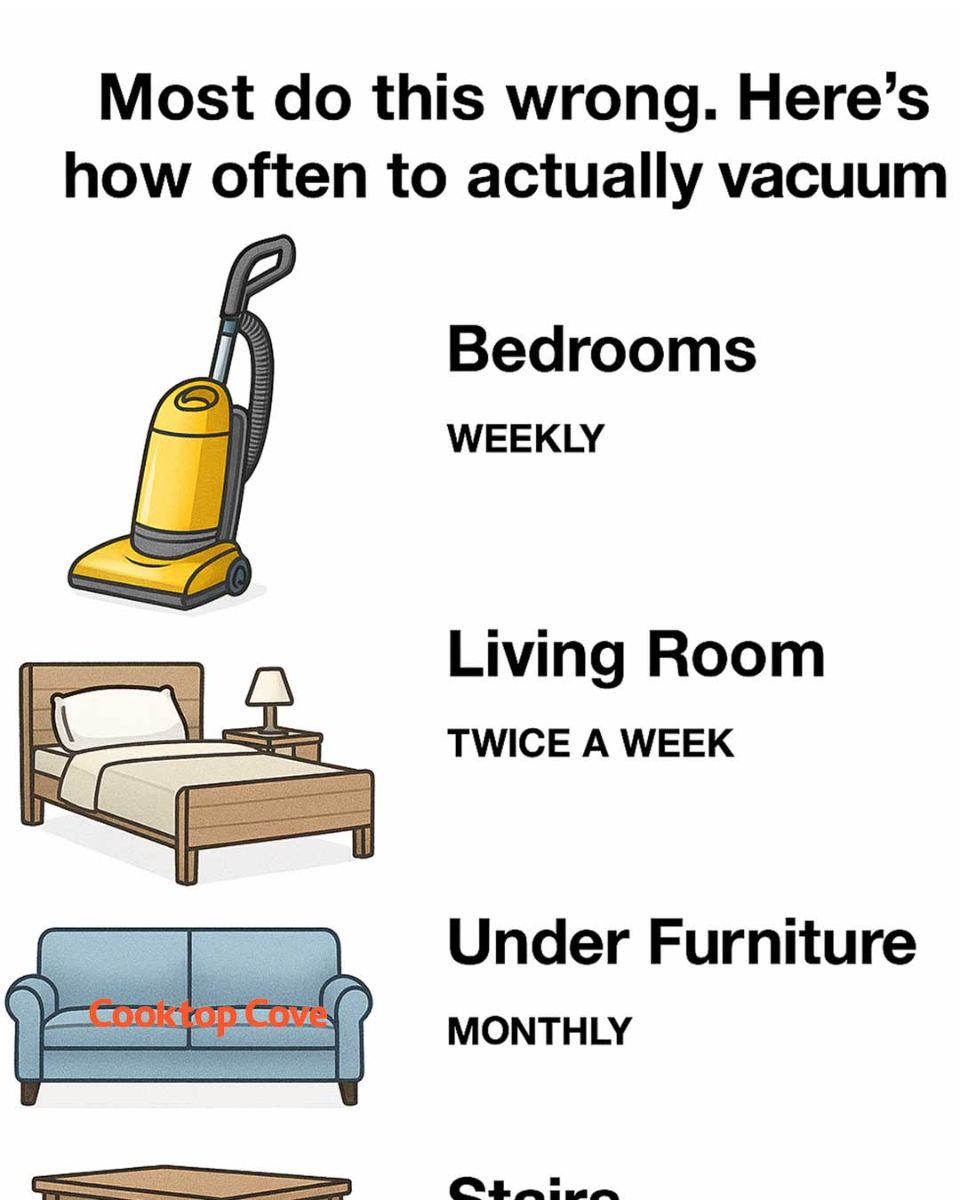
Most do this wrong. Here’s how often to actually vacuum
The living room is often the most trafficked area of a home, and as a result, it can accumulate dirt and debris more quickly than other rooms. Vacuuming your living room twice a week can help manage the buildup of dust and prevent it from becoming embedded in carpets and upholstery.
In addition to regular vacuuming, consider using a carpet rake or brush to loosen dirt before vacuuming. This can be particularly helpful in homes with pets, as it helps to lift pet hair and dander from carpet fibers, making it easier to vacuum away.
5. Navigating Under Furniture: A Monthly Guide
While it might be tempting to skip the areas under furniture, these spaces can often harbor dust and allergens. Make it a point to move furniture and vacuum underneath at least once a month. This not only helps maintain cleanliness but also prevents dust from accumulating and being redistributed into the air.
When vacuuming under furniture, use attachments designed for reaching tight spaces, such as crevice tools or extension wands. This ensures that you are effectively removing dust and debris from these hard-to-reach areas.
6. Stairs: Tackling High-Traffic Areas Every Few Days
Stairs are high-traffic areas that can quickly gather dirt and debris. Vacuuming stairs every few days can prevent dirt from becoming ingrained in carpet fibers. Use a handheld vacuum or a vacuum with a hose attachment to make the task easier and ensure you reach every corner.
When vacuuming stairs, start at the top and work your way down. This prevents dirt from being redistributed onto already cleaned areas. Additionally, focus on the edges and corners where dust tends to accumulate.
7. Common Mistakes: What Most People Get Wrong
One common mistake people make is vacuuming too quickly. Slow and steady passes are more effective at picking up dirt and debris than rushing through the task. Another mistake is neglecting to empty the vacuum bag or canister regularly, which can reduce suction power and efficiency.
People often forget to clean or replace the vacuum filter. A dirty filter can impede airflow and reduce the vacuum’s effectiveness. Always check the manufacturer’s recommendations for filter maintenance to ensure your vacuum operates at peak performance.
8. Technology to the Rescue: Using Robotic Vacuums
Robotic vacuums have become increasingly popular due to their convenience and efficiency. These devices can be programmed to clean on a schedule, ensuring that your floors are regularly maintained without much effort on your part. Some models are equipped with advanced sensors that allow them to navigate around furniture and avoid obstacles.
While robotic vacuums are excellent for maintaining cleanliness, they should not completely replace manual vacuuming. They are best used in conjunction with traditional vacuuming to ensure thorough cleaning, especially in areas like corners and under furniture where robots might miss.
9. Popular Viral Hacks: What Works and What Doesn’t
The internet is filled with cleaning hacks, but not all of them are effective or safe. For example, using baking soda to refresh carpets before vacuuming can help neutralize odors, but using too much can clog your vacuum. It’s important to research and test hacks in small areas before applying them widely.
Another hack is using essential oils on a vacuum filter to freshen the air as you clean. While this can work well, ensure that the oil does not damage the filter or vacuum parts. Always follow manufacturer guidelines when trying new hacks to avoid voiding warranties or damaging your vacuum.
10. Adapting Your Routine for Pet Owners
